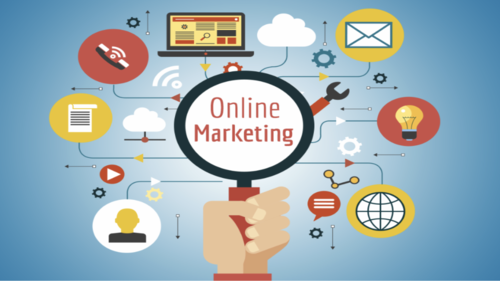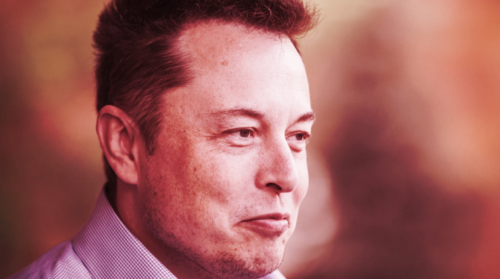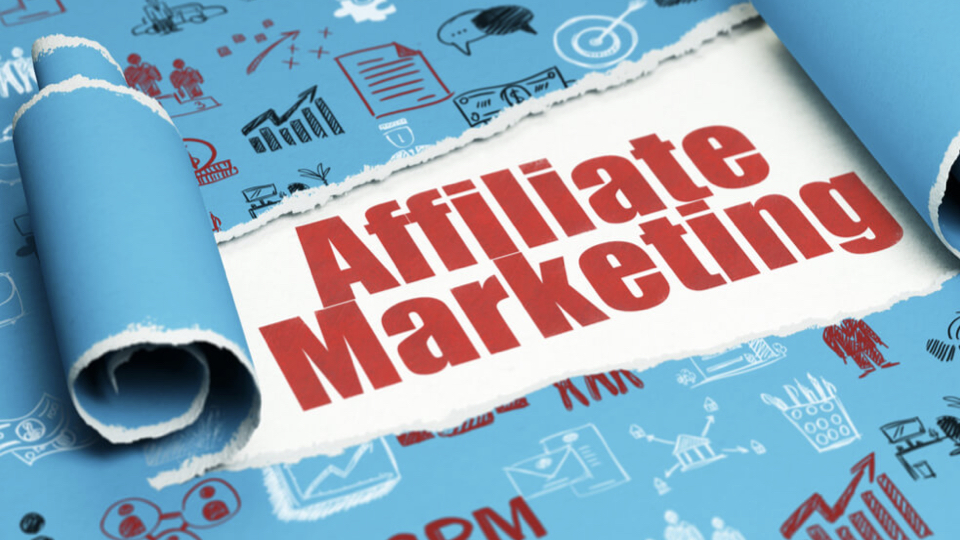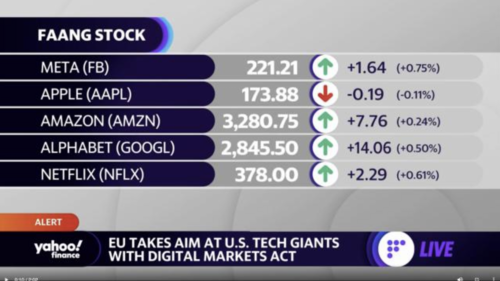Marketing Must-Dos = Make More In Less Time!
by Karon Thackston, owner, Marketing Words

Plan Your Offer Funnel Checklist
For decades, the marketing funnel has proven itself to be a steadfast marketing method that repeatedly delivers new opt-ins to your list and dollars to your bank account. But many funnels don’t work as well as they should because steps are missing, the target is off, or something else isn’t quite right. These steps will make sure you’re on track.
“I need to…”
ï¨ Identify my most expensive product or service. This is the tip/bottom of my funnel and what all of my activities, products, and services funnel into.
ï¨ Set the price for this product or service. It’s a fair price that meets demand and solves a high-level problem and provides a substantial value.
ï¨ Outline a tiered product/service offering that gradually increases from free to my previously identified most expensive item. Each item provides value and builds upon itself to offer increasing value and benefit.
ï¨ Create a system to brainstorm my free content, the largest portion, and the top of my funnel. This includes all of the content I normally publish to generate awareness and drive traffic. I’ve used:
ï° Lists
ï° Mindmaps
ï° Keyword research
ï° Google Alerts
ï° Consumer surveys
ï° Previously published content
ï° Competition
ï° Trends
ï° Social media
ï° Other_______________________
ï¨ Decide on a schedule and content plan for my free content. My content includes:
ï° Blog posts
ï° Podcast(s)
ï° Video(s)
ï° Interview(s)
ï° Guest blogging
ï° Social media posts
ï° Other_________
ï¨ Make my freebie or free offer (or have it created for me) to introduce or pull people into the next tier of my funnel. The goal of this offer is to capture an email address.
ï° Newsletter
ï° Course
ï° Report
ï° eBook
ï° Audio
ï° Video
ï° Tutorials
ï° Webinars
ï° Other_________
ï¨ Create an introductory product or service that meets my target audience’s basic needs.
ï° eBook
ï° Guide
ï° Webinar
ï° Group Coaching
ï° Other__________
ï¨ Identify an introductory price for the product or service that my customers will be able to easily justify and part with.
ï¨ Choose a mid-level product or service that meets my target audience’s basic needs.
ï° eBook
ï° Webinar series
ï° Home Learning Product
ï° Individual Coaching
ï° Other__________
ï¨ Pick a mid-level price for the product or service that my customers will be able to easily justify and part with.
ï¨ Establish a marketing strategy to connect with customers as they move through the funnel to upsell and help them take the next step.
ï¨ Use this plan for your offer funnel checklist to guide you as you plan your offer and create a seamless system to introduce prospects to your funnel and move them through seamlessly.
Sales Funnel Development Checklist
“I need to…”
ï¨ Make a list of all the products and services I offer, including their original and sale price points. Create a system to organize my products/services and relevant prices. Use:
ï° Spreadsheets
ï° Mind map
ï° Flowchart
ï° Notebook
ï° Other__________
ï¨ Identify the problem solved, the target audience, and the benefit each product or service provides.
ï¨ Create a content plan that is used to drive traffic and enter my prospects into my sales funnel including:
ï° Social media post
ï° Blog posts
ï° Guest blog posts
ï° Free reports/case studies
ï° Videos
ï° Interviews
ï° Other______
ï¨ Develop an opt-in offer and squeeze page to build my email list. My opt-in offer is a:
ï° Report
ï° Newsletter
ï° Video series
ï° Tutorial
ï° eBook
ï° Other_______
ï¨ Write automated emails and a thank you page so I can follow-up messages to transition them to the first product in my sales funnel.
ï° Establish a timeline that takes into consideration the most effective time to deliver each message.
ï° Identify the format, goal, and call to action for each message.
ï¨ Write and scheduled my email messages using my chosen email marketing platform such as Active Campaign or Aweber.
ï¨ Look at my product/service list, I’ve identified opportunities to:
ï° Upsell – When during your sales and marketing process can you offer the next higher-priced product to your customer?
ï° Cross-sell – When within the body of your sales funnel can you offer complementary or supplementary products to your customer?
ï° Create special promotions – Where in your sales process and funnel can you introduce special promotions to your customers to help them move through your funnel?
ï¨ Develop my sales page for each offer. It includes:
ï° Attention-grabbing headline
ï° Compelling benefit-driven copy
ï° Proof
ï° Motivation to act now, for example, a limited number or a limited time offer
ï° Call to action
ï¨ Test all elements of the sales funnel process including email links, sales page links, and how each element appears on various browsers. My shopping cart system is integrated into the sales material and emails and everything is working perfectly.
ï¨ Implement a system of analytics and evaluation – create systems to collect data about:
ï° Email message click-through rates
ï° Links and calls to action on sales pages
ï° Email open rate
ï° Squeeze page conversions
ï° Sales and profits for each customer and offer
ï° Schedule a time each week/month/quarter to review the analytics and make any necessary tweaks or changes to my existing sales funnel.
Email Marketing Checklist
Email marketing is one of the most effective and efficient methods to connect with your audience on a consistent and personal level. This checklist will help you create a productive email marketing strategy.
“I need to…”
ï¨ Set my goal for my email marketing strategy and each message sent to subscribers. I’m:
ï° Motivating affiliate sales
ï° Driving traffic to a sales page
ï° Driving traffic to my blog/website
ï° Selling/promoting a product
ï° Other:______________
Research and identify the autoresponder technology that will help me create an effective and efficient email marketing system. For example, Active Campaign or Aweber. Create an account and/or set up my account with the service provider, including:
ï° Newsletter/email format
ï° Image/graphics
ï° Unsubscribe policy and procedure
ï° Subscribe policy/procedure. For example, do you require a double opt-in?
ï° Disclaimers/copyright statement
ï° Social media connections have been enabled.
Establish a content/email schedule that consistently provides value and helps me reach my email marketing goals.
ï° This schedule is one that I can follow through on by writing the content myself and managing the newsletter or by hiring assistance.
ï° This schedule includes the day(s) and time(s) each email message will be sent.
Know who my email list is targeting and I’ve implemented measures to motivate subscriptions. Including:
ï° Download
ï° Freebie
ï° Special offer/promotion
ï° The promise of fantastic content
ï° Other__________
ï¨ Define my email message. Create a list of email topics that engage my subscribers and provide value. I know what my audience wants to know and I’ve created an email content plan to achieve it.
ï¨ Implement and use Google Analytics or my email service provider provides the data that I need to evaluate the success of each email I sent. A time has been scheduled on my weekly/monthly calendar to review the analytics and make necessary adjustments to my email marketing campaign and strategy.
ï¨ Write attention-grabbing and effective subject lines. Each email message has a test subject line so I can determine what my audience best responds to.
ï¨ Include a call to action in each email message sent to subscribers. The call to action clearly tells readers what they should do next and there are compelling reasons to take action now.
ï¨ Create engaging content that supports my goals for my email marketing strategy. This content provides value and motivates readers to not only remain subscribers but to also take action.
ï¨ Test each email and make sure that:
ï° My links work
ï° My email isn’t perceived as SPAM and placed in junk email folders
ï° My email, whether delivered in text or HTML, looks good on all browsers
ï° My 'From' line is clear and apparent – people know who is sending them an email
Use this handy checklist to help you make sure you don’t miss a step when creating your email marketing messages and strategy. Reap the many powerful benefits email marketing has to offer.

Brand Decisions Checklist
Your brand is the image that people observe, develop, and relate to. It connects you to your customers and prospects. The branding process, including the planning and decision process, are important. These decisions have an impact on your future success. By working through this checklist, you’ll establish a solid brand and a plan to move forward and integrate it into all of your marketing and sales efforts.
“I need to…”
ï¨ Identify my business vision and mission. My branding decisions must remain true to my vision and mission in order to provide a consistent and comprehensive image to prospects and customers.
ï¨ Identify colors that best represent the brand I want to portray. These colors embody the vision and mission of my business along with the message I wish to convey.
ï¨ Choose a brand name that is easy to remember, easy to spell, and can be registered as a domain name.
ï¨ Have a solid understanding of who my target audience is and understand what their needs, interests, and goals are. I know how my branding efforts influence my unique target customer.
ï¨ Know what differentiates me from my competition. I know what value I bring to my prospects. I can answer the following questions:
ï° How do you benefit your clients?
ï° Why do they like you?
ï° Why do they buy from you?
ï¨ Create a logo, or hire someone to create a logo, that conveys my brand in a way that is simple and easy to understand. My brand colors are used in the logo and the logo supports my vision and mission.
ï¨ Develop a brand purpose – a statement that highlights what I provide the market, how my business is different, and what makes my business distinct.
ï¨ Create a brand personality – a statement or list of characteristics and words that best describe my brand. My brand personality embraces elements of my personality so that I can create a stronger connection with my audience.
ï¨ Develop a brand promise – an emotional statement that connects prospects to my brand and my company. My brand promise and message both evoke a positive emotion.
Facebook Checklist
Facebook continues to grow amongst most demographics. It’s widely used by many target audiences and can be an effective tool to grow your audience, and ultimately your sales. Use this checklist to make sure you don’t miss a step as you plan and implement your Facebook Marketing Strategy.
“I need to…”
ï¨ Choose a Facebook name that is consistent with my business. Customers will be able to easily identify my business Facebook page and profile.
ï¨ Create a vanity URL that I can use to promote my Facebook page. My vanity URL, for example, Facebook.com/yourbusinessname, is professional, consistent, and apparent to my customers. (Go to Admin panel, Edit page, and Update info to set your Vanity URL).
ï¨ Design and brand my Facebook page with current photos, my logo, and other images that represent my business. My cover photo and header image are professional and relevant to my business. My tagline is present on my Facebook page.
ï¨ Create an "About" page that embraces my company brand, voice, and communicates current and relevant information about my business.
ï¨ Decide on a goal for my Facebook page and social media marketing activities. I intend to use Facebook to:
ï¨ Drive traffic to my site
ï¨ Provide valuable content
ï¨ Promote/sell products
ï¨ Build my opt-in list
ï¨ Other__________
ï¨ Establish a message for my Facebook page that supports my goals for Facebook marketing.
ï¨ This message supports my brand and is authentic.
ï¨ This message is engaging and provides value to my friends and followers.
ï¨ Create a content schedule that provides a steady and consistent flow of valuable content that supports my goals and message.
ï¨ Set aside time each day so that I can consistently connect with potential prospects and build my following while building my business and reaching my marketing goals. For example, I’ve set aside fifteen minutes two times each day to share, comment, and post. I’ve scheduled one post for each day of the week.
ï¨ Integrate Facebook with my other marketing tactics including:
ï¨ My blog
ï¨ My website
ï¨ My email signature
ï¨ My email marketing
ï¨ Other social media pages
ï¨ Other__________
ï¨ Leverage technology and automate as much of the process as possible. For example, my weekly email newsletter is posted on Facebook.
ï¨ Create systems to test and track my Facebook marketing results. I’m testing for:
ï° Content
ï° Delivery/posting time
ï° Clicks
ï° Subscribes
ï° And measuring my results as they relate to my specific Facebook goals.
Facebook can be a useful tool to connect with your prospects and begin to build a community around your business. Create your message, follow-through, and track your results.
Twitter/LinkedIn Checklists
Both Twitter and LinkedIn serve different audiences and purposes. However, for the sake of efficiency, I’m combining the checklists – many of the steps are the same or similar.
“I need to…”
ï¨ Create my Twitter profile. My profile includes my name, my location, and a short bio
ï¨ or statement about me and my business. It also includes a link to my blog or website.
ï¨ Customize my Twitter background with my business logo or an image that is relevant to my business.
ï¨ Create my LinkedIn Profile page.
ï° It includes a lengthy summary about me and/or my business.
ï° It includes contact information.
ï° It includes references/recommendations/endorsements.
ï° It includes a recent and professional photo
ï¨ Choose a goal for both my Twitter and LinkedIn social media marketing activities. I intend to use them to:
ï° Drive traffic to my site
ï° Provide valuable content
ï° Build my opt-in list
ï° Establish credibility and authority
ï° Other__________
ï¨ Establish a message for my Twitter and LinkedIn activities that supports my goals for each site.
ï° This message supports my brand and is authentic.
ï° This message is engaging and provides value to my friends and followers.
ï¨ Develop a content schedule that provides a steady and consistent flow of valuable content that supports my goals and message. This content schedule includes searchable hashtags for Twitter content. For LinkedIn, consider answering questions or joining groups and providing content for a unique and specific audience.
ï¨ Set aside time each day so that I can consistently connect with potential prospects and build my following while building my business and reaching my marketing goals. For example, I’ve set aside time during my day/week to post unique and valuable content.
ï¨ Integrate Twitter and LinkedIn with my other marketing tactics including:
ï° My blog
ï° My website
ï° My email signature
ï° My email marketing
ï° Facebook
ï° Other__________
ï¨ Leverage technology and automate as much of the process as possible. For example, I’ve scheduled Twitter posts in advance using an autoposter and linked those tweets to my Facebook page.
ï¨ Create systems to test and track my Twitter and LinkedIn marketing results. I’m testing for:
ï° Content
ï° Delivery/posting time
ï° Clicks
ï° Subscribes
ï° And measuring my results as they relate to my specific LinkedIn and Twitter goals.
Both Twitter and LinkedIn have unique audiences and can help you build a community, increase awareness and ultimately build your business.
Instagram/Pinterest Checklists
Instagram and Pinterest are two of the hottest social platforms today. People love getting insight into your everyday life on Instagram, and sharing all the cool stuff they find on Pinterest. In fact, Pinterest is one of the top sources of referrals to blogs in many niches, so if you’re not leveraging these two social networks, you might just be missing out!
“I need to…”
ï¨ Create my Pinterest profile. My profile includes my name, a short bio or statement about me and my business, and a link to my website.
ï¨ Customize my Instagram profile with my name and business, appropriate keywords, and a link to my website.
ï¨ Create relevant Pinterest “boards” to showcase:
ï° Related products and services
ï° Fun niche content
ï° My products and services
ï° Personal interests
ï° Useful tips my market can use
ï¨ Identify appropriate hashtags for Instagram which are:
ï° Related to my niche
ï° Widely used and searched for by my target audience
ï° Keyword-rich
ï¨ Establish a goal for my Instagram and Pinterest activities that supports my overall business development plans, including:
ï° Increasing traffic to my website
ï° Growing my mailing list
ï° Increasing sales
ï¨ Develop a habit of sharing content through both Instagram and Pinterest on a regular basis.
ï¨ Schedule time each day so that I can consistently connect with potential prospects and build my following while building my business and reaching my marketing goals. For example, I’ve set aside time during my day/week to post unique and valuable content.
ï¨ Integrate my Instagram and Pinterest accounts with:
ï° My blog
ï° My website
ï° My email signature
ï° My email marketing
ï° Facebook
ï° Other__________
ï¨ Test and track engagement and follower growth using the tools available on both Instagram and Pinterest.
YouTube Checklist
YouTube is the second largest search engine online today. You very likely use it yourself when looking for help on a project, or just want a fun diversion for a few minutes. But are you using YouTube to grow your business? Here’s how to get the most out of YouTube.
“I need to…”
ï¨ Create my YouTube profile. My profile includes my name, a short bio or statement about me and my business, and a link to my website.
ï¨ Customize my YouTube header and profile picture to include an image of me and my logo.
ï¨ Make relevant YouTube “playlists” to showcase various categories of videos.
ï¨ Identify appropriate keywords for YouTube which are:
ï° Related to my niche
ï° Widely used and searched for by my target audience
ï¨ Organize a system for optimizing my YouTube videos, including:
ï° Appropriate and keyword-rich naming
ï° Compelling descriptions which include my website link
ï° Call to action within each video
ï¨ Develop a schedule for posting new videos that is both consistent and goal-oriented.
ï¨ Schedule time in my calendar to batch record videos so that I don’t get overwhelmed.
ï¨ Integrate my YouTube and Google + accounts.
ï¨ Share my videos on Facebook, Pinterest, and other social accounts.
ï¨ Share my YouTube videos on my blog and in my email marketing.

New Opportunities Are Emerging For Citizens of The World.
Freedom and democracy may appear to be struggling to stay alive in America, but there may be a knock-out punch ready to be released. The evolution of the blockchain-enabled metaverse is going to enable the 'Citizens of the World' to gain their own Freedom by democratizing power and creating a new world with new rules, new players, and new opportunities. For 99.99% of us, the metaverse will improve our real-world lives through the democratization of power and opportunity.
Along with the major long-term trend of society towards decentralization and smaller-scale organizations, there are new opportunities developing to help 'Preparers' in the cryptocurrency sector. Businesses are beginning to issue their own Crypto Coins that can be traded on Cryptocoin Exchanges.
Markethive.com for example will be releasing its HiveCoin (HIV) in the coming weeks. It has tremendous upside potential that is outlined in a Video by Founder Tom Prendergast, "Entrepreneur Advantage…".
Not only that, if you go to their website and register as a FREE Member, you will be given 500 HiveCoins for "FREE" along with access to several Earning Opportunities and online tools to increase your HiveCoin balance.
Be sure to check it out today – Markethive.com

Tim Moseley

.gif)
.gif)





.png)
.png)
(11).png)
.png)

.png)



.png)



(2).jpg)